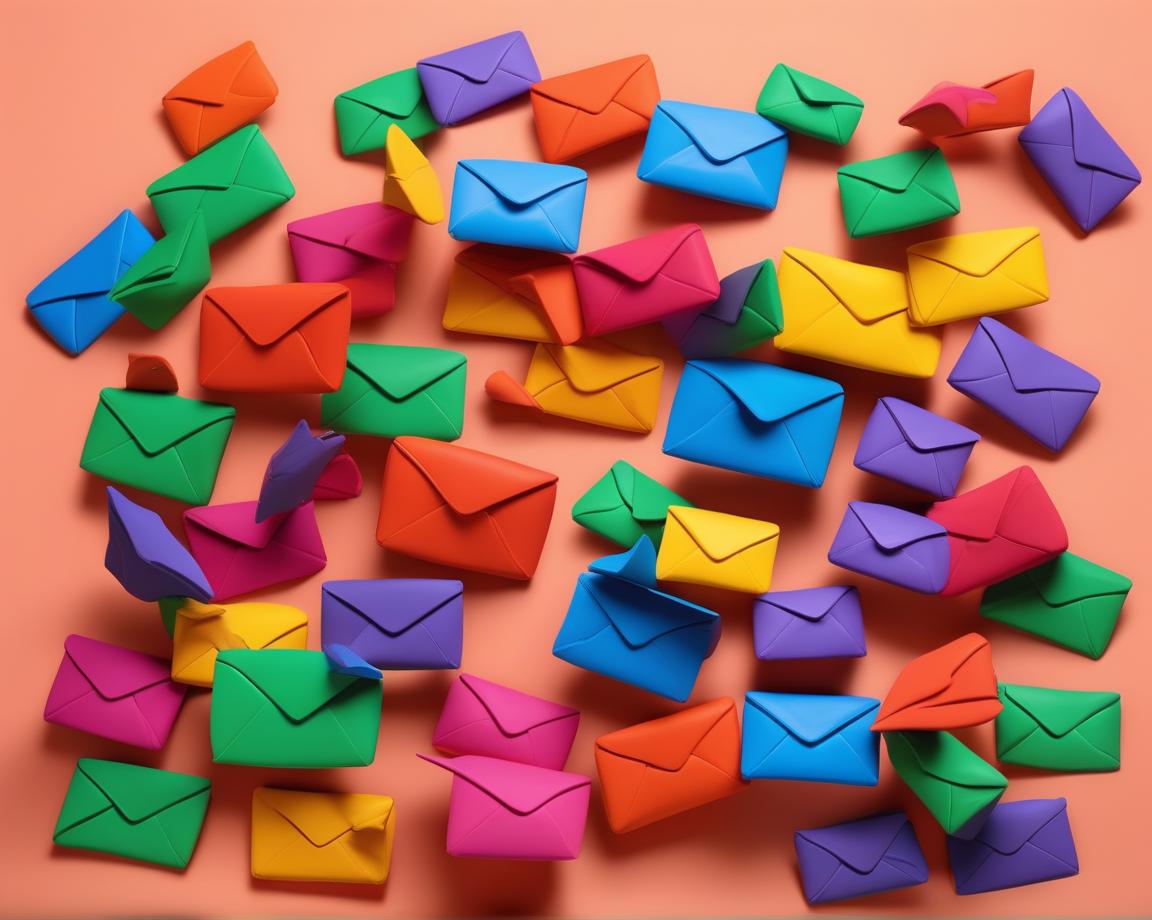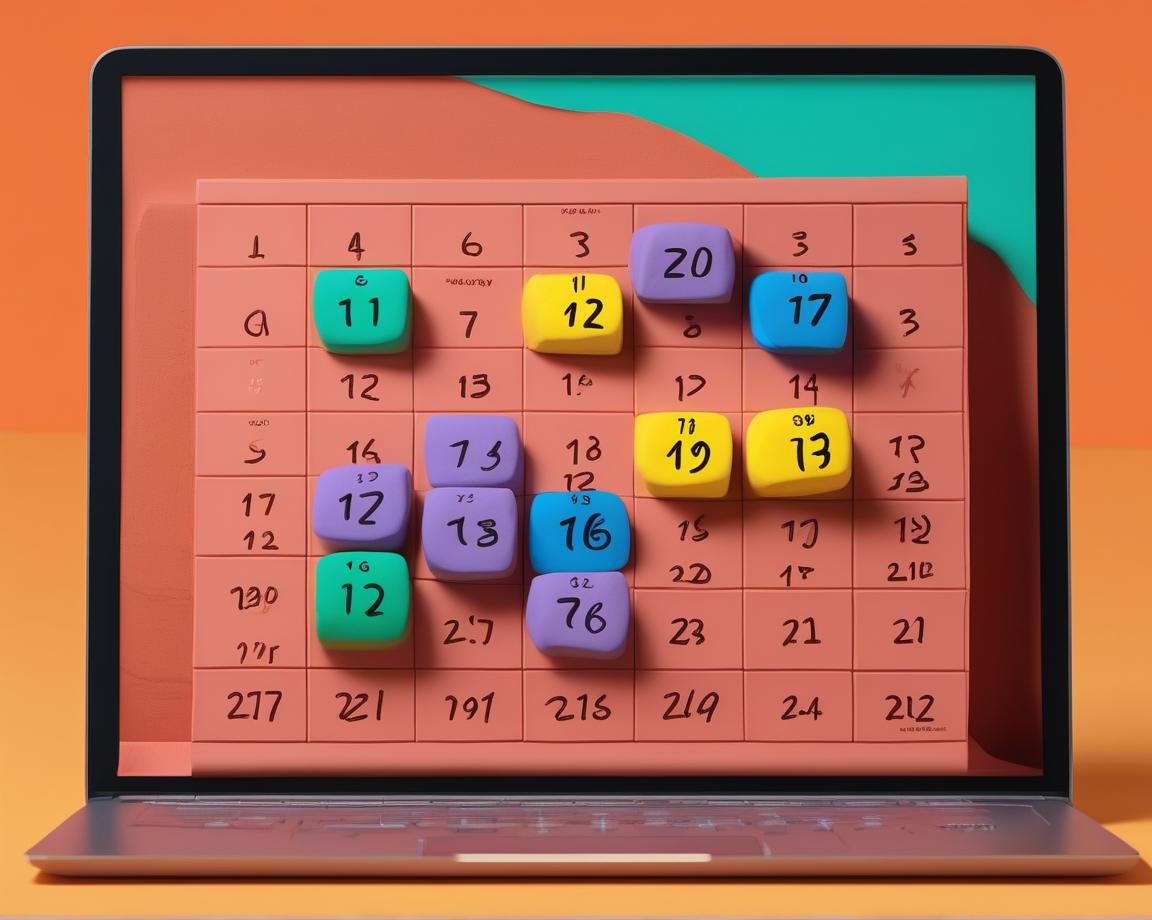Cold emails are an integral part of a comprehensive b2b lead generation and sales pipeline strategy for SAAS companies. In this blog post, our expert Eric Nowoslawski shares his insights on how to maximize lead generation through effective cold email outreach and inbound marketing campaigns. By following these tips, sales teams can increase their qualified leads and target audience while optimizing their sales funnel, landing pages, and lead generation tools.
Subject Line Matters Most
The subject line of a cold email is one of the most critical components of a successful lead generation campaign. It is the first point of contact the recipient has with the email, so it's vital to make it compelling enough to encourage the recipient to open it. Crafting an attention-grabbing subject line that is optimized for SEO will increase the chances of the recipient opening the email.
Write with a Human Touch
To make your cold emails more effective, it's crucial to write them as if you were communicating with a human. This can help to avoid the robotic language that can often make emails seem spammy and irrelevant. Instead, try to write your emails as you would talk to a colleague, providing as much context as possible.
Focus on a Response, Not a Sale
Many novice salespeople aim to close a sale with their first cold email, but it takes time and effort to convert a cold lead into a warm customer. The initial objective of your cold email should be to generate a response, not necessarily a sale.
Include a Clear Call-to-Action (CTA)
The chances of a recipient responding to your cold emails will increase if you provide them with a clear and compelling call to action (CTA). Highlight the value you can provide to the recipient and include a CTA that is designed to drive lead conversion.
Highlight the Benefits
The most successful cold emails are those that communicate how your product can help the recipient achieve their desired outcome. Emphasize the end result the recipient can achieve with your product and include a clear call to action (CTA).
Keep it Brief
Prospects are busy, and emails are an interruption in their day, so it's essential to keep your emails concise and straightforward. Ideally, cold emails should be under 75 words in length. If this is challenging, it may indicate that you don’t fully understand your target audience or product. Take the time to focus on what your potential clients want and how your product/service can enable them to achieve it.
Limit Follow-up Emails
Most positive responses will come from the first or second email in your sequence. Sending too many follow-up emails can result in negative responses and lower open rates. Based on data from SalesLoft and Gartner, it's best to send about four emails over six weeks. If no reply, move on to new leads. If your target audience is small, wait two to three months before reaching out again.
Define Your Offer and Marketing Angle
To effectively communicate what you’re selling, you need a clear and concise offer. The most successful offers revolve around three things: getting paid, building status, or living longer. Simplify your offer to one sentence, such as "We help [types of people] achieve [result] in [time]". For instance, for a lead generation tool, the offer could be "We help small businesses increase their conversion rate and generate high-quality leads through our optimization of landing pages and email campaigns."
In addition to cold emails, other lead generation strategies such as inbound marketing, social media, and email marketing can be great ways of generating sales leads.
Once you have defined your offer, create a marketing angle that resonates with your prospects. What are they most concerned with: making more money, saving time, or something else? How can your product help them achieve this? To maximize the success of your cold email campaign, consider using cold email templates.
Subject lines
Try to write subject lines that could’ve been sent to your readers by their own customers or colleagues. Make sure to keep them short (2-3 words) and casual (no formal language, not capitalized). Example (good): monthly SEO analytics
Example (bad): Don’t hire your next sales development representative until you do this!(Tip: listicle-type headlines that work well for SEO articles never work well in emails). Needless to day, never bait-and-switch people in your subject lines.
**Don’t pretend that you have a customer for someone and then pitch lead generation services. Make sure that your subject lines are connected to your message.
Line 1: Why you’re reaching out
In the first line of your email, describe the reason that you’re reaching out. Did you notice an announcement about your prospect’s company? Did you just read their LinkedIn post? Show that you’ve done homework to ensure that the connection is relevant.A useful template for this is: It looks like your company is [experiencing an event], and from my experience, this means [insight].Example: I was looking into your company, and I used the SimilarWeb Chrome extension to see that your web traffic has been declining in the last three months.
Line 2: How your product enables them to do better
Now, it’s time to describe a problem you noticed that your prospect might have and how your product can help them solve it. Example: Your web traffic might be declining for many reasons, but one big factor may be that you don’t have enough content on your site. I noticed that your last blog post was from three years ago.
Line 3: Social proof
Then, give your reader social proof to show them that you’re reputable and have past experience helping companies with similar problems.Example: I just helped [X company relevant to your prospect’s industry and size] increase their search traffic by 250% in six months through SEO-optimized content.
Line 4: Interest-based call to action
Finally, give your recipient a way to engage with you. Your biggest goal is to get an email in response. A good template for this final call to action is: if we could help you with [problem], would that be useful to you?Let’s put all our learning together in this example of a cold email from an external sales team to a financial services company:
Hi [X],
I noticed that you're in the financial services industry and you've got a company with 15 employees. From my experience, I assume that you’re keeping a lean sales and marketing team. I’m currently working with [a financial services company similar in size to the prospect] on a campaign that is getting their sales team 2-3 interested leads a day. We’re targeting people who’ve recently changed jobs to see if they’re doing their rollover correctly. If I could help you connect with potential customers like this, would that be helpful to you?
Cheers,[Y]
Overall framework for an entire email sequence
In the previous section, we shared a framework for your first cold email. To recap, your first email discusses how you noticed a company, how you can solve their problems, and how you’ve done this in the past. Now, let’s go over the rest of your email sequence.
Email 2: Additional context
Email 1 was meant to succinctly communicate that your product could help your prospects solve important business problems. Email 2 is meant to add more detailed context on how. This is the place to add more information about product features or the transformation you’ll enable for your customers.Here’s an example using the financial services company we pitched above
Hi [X],
I previously mentioned that I’ve been helping [X company] find customers by contacting people who’ve recently changed jobs to see if they need help with new benefits packages or rollover plans. For a bit more context, we do this by constantly monitoring LinkedIn Sales Navigator for people who are changing jobs. When they change jobs, we reach out on your behalf to see if they need your services.We have the copy ready and I have a video that can show you how to build this kind of list. Would that be interesting to you?
Cheers,[Y]
Email 3: Angles
If your prospect still hasn’t replied, you should try using a different angle. Your first two emails, e.g., may have emphasized that your product would help your reader earn more revenue. But what if driving more revenue isn’t their biggest priority? Email 3 gives you the chance to change your angle. Perhaps, instead of emphasizing that your product can help someone make more money, you can emphasize how it can help them save time.
Email 4: The breakup email
In your final email, ask your prospect if there's somebody else at their company you should speak to. Example: I noticed that [your company] has 255 employees. Perhaps this isn't your area of focus. Is there somebody else that I should be speaking to? Data indicates that people respond to breakup emails more often than they respond to the other emails in a sequence. If you remain available to connect while offering to route yourself to a more relevant person within their organization, you will increase your chances of getting a positive reply.
By now, you have a framework to use to write effective cold email sequences. This is a simple baseline that you can supplement with many different kinds of marketing tactics (LinkedIn, cold calling, ads, etc) to strengthen your results. If you have any suggestions or questions, please reach out to Eric!
Cold emails are an integral part of a comprehensive b2b lead generation and sales pipeline strategy for SAAS companies. In this blog post, our expert Eric Nowoslawski shares his insights on how to maximize lead generation through effective cold email outreach and inbound marketing campaigns. By following these tips, sales teams can increase their qualified leads and target audience while optimizing their sales funnel, landing pages, and lead generation tools.
Subject Line Matters Most
The subject line of a cold email is one of the most critical components of a successful lead generation campaign. It is the first point of contact the recipient has with the email, so it's vital to make it compelling enough to encourage the recipient to open it. Crafting an attention-grabbing subject line that is optimized for SEO will increase the chances of the recipient opening the email.
Write with a Human Touch
To make your cold emails more effective, it's crucial to write them as if you were communicating with a human. This can help to avoid the robotic language that can often make emails seem spammy and irrelevant. Instead, try to write your emails as you would talk to a colleague, providing as much context as possible.
Focus on a Response, Not a Sale
Many novice salespeople aim to close a sale with their first cold email, but it takes time and effort to convert a cold lead into a warm customer. The initial objective of your cold email should be to generate a response, not necessarily a sale.
Include a Clear Call-to-Action (CTA)
The chances of a recipient responding to your cold emails will increase if you provide them with a clear and compelling call to action (CTA). Highlight the value you can provide to the recipient and include a CTA that is designed to drive lead conversion.
Highlight the Benefits
The most successful cold emails are those that communicate how your product can help the recipient achieve their desired outcome. Emphasize the end result the recipient can achieve with your product and include a clear call to action (CTA).
Keep it Brief
Prospects are busy, and emails are an interruption in their day, so it's essential to keep your emails concise and straightforward. Ideally, cold emails should be under 75 words in length. If this is challenging, it may indicate that you don’t fully understand your target audience or product. Take the time to focus on what your potential clients want and how your product/service can enable them to achieve it.
Limit Follow-up Emails
Most positive responses will come from the first or second email in your sequence. Sending too many follow-up emails can result in negative responses and lower open rates. Based on data from SalesLoft and Gartner, it's best to send about four emails over six weeks. If no reply, move on to new leads. If your target audience is small, wait two to three months before reaching out again.
Define Your Offer and Marketing Angle
To effectively communicate what you’re selling, you need a clear and concise offer. The most successful offers revolve around three things: getting paid, building status, or living longer. Simplify your offer to one sentence, such as "We help [types of people] achieve [result] in [time]". For instance, for a lead generation tool, the offer could be "We help small businesses increase their conversion rate and generate high-quality leads through our optimization of landing pages and email campaigns."
In addition to cold emails, other lead generation strategies such as inbound marketing, social media, and email marketing can be great ways of generating sales leads.
Once you have defined your offer, create a marketing angle that resonates with your prospects. What are they most concerned with: making more money, saving time, or something else? How can your product help them achieve this? To maximize the success of your cold email campaign, consider using cold email templates.
Subject lines
Try to write subject lines that could’ve been sent to your readers by their own customers or colleagues. Make sure to keep them short (2-3 words) and casual (no formal language, not capitalized). Example (good): monthly SEO analytics
Example (bad): Don’t hire your next sales development representative until you do this!(Tip: listicle-type headlines that work well for SEO articles never work well in emails). Needless to day, never bait-and-switch people in your subject lines.
**Don’t pretend that you have a customer for someone and then pitch lead generation services. Make sure that your subject lines are connected to your message.
Line 1: Why you’re reaching out
In the first line of your email, describe the reason that you’re reaching out. Did you notice an announcement about your prospect’s company? Did you just read their LinkedIn post? Show that you’ve done homework to ensure that the connection is relevant.A useful template for this is: It looks like your company is [experiencing an event], and from my experience, this means [insight].Example: I was looking into your company, and I used the SimilarWeb Chrome extension to see that your web traffic has been declining in the last three months.
Line 2: How your product enables them to do better
Now, it’s time to describe a problem you noticed that your prospect might have and how your product can help them solve it. Example: Your web traffic might be declining for many reasons, but one big factor may be that you don’t have enough content on your site. I noticed that your last blog post was from three years ago.
Line 3: Social proof
Then, give your reader social proof to show them that you’re reputable and have past experience helping companies with similar problems.Example: I just helped [X company relevant to your prospect’s industry and size] increase their search traffic by 250% in six months through SEO-optimized content.
Line 4: Interest-based call to action
Finally, give your recipient a way to engage with you. Your biggest goal is to get an email in response. A good template for this final call to action is: if we could help you with [problem], would that be useful to you?Let’s put all our learning together in this example of a cold email from an external sales team to a financial services company:
Hi [X],
I noticed that you're in the financial services industry and you've got a company with 15 employees. From my experience, I assume that you’re keeping a lean sales and marketing team. I’m currently working with [a financial services company similar in size to the prospect] on a campaign that is getting their sales team 2-3 interested leads a day. We’re targeting people who’ve recently changed jobs to see if they’re doing their rollover correctly. If I could help you connect with potential customers like this, would that be helpful to you?
Cheers,[Y]
Overall framework for an entire email sequence
In the previous section, we shared a framework for your first cold email. To recap, your first email discusses how you noticed a company, how you can solve their problems, and how you’ve done this in the past. Now, let’s go over the rest of your email sequence.
Email 2: Additional context
Email 1 was meant to succinctly communicate that your product could help your prospects solve important business problems. Email 2 is meant to add more detailed context on how. This is the place to add more information about product features or the transformation you’ll enable for your customers.Here’s an example using the financial services company we pitched above
Hi [X],
I previously mentioned that I’ve been helping [X company] find customers by contacting people who’ve recently changed jobs to see if they need help with new benefits packages or rollover plans. For a bit more context, we do this by constantly monitoring LinkedIn Sales Navigator for people who are changing jobs. When they change jobs, we reach out on your behalf to see if they need your services.We have the copy ready and I have a video that can show you how to build this kind of list. Would that be interesting to you?
Cheers,[Y]
Email 3: Angles
If your prospect still hasn’t replied, you should try using a different angle. Your first two emails, e.g., may have emphasized that your product would help your reader earn more revenue. But what if driving more revenue isn’t their biggest priority? Email 3 gives you the chance to change your angle. Perhaps, instead of emphasizing that your product can help someone make more money, you can emphasize how it can help them save time.
Email 4: The breakup email
In your final email, ask your prospect if there's somebody else at their company you should speak to. Example: I noticed that [your company] has 255 employees. Perhaps this isn't your area of focus. Is there somebody else that I should be speaking to? Data indicates that people respond to breakup emails more often than they respond to the other emails in a sequence. If you remain available to connect while offering to route yourself to a more relevant person within their organization, you will increase your chances of getting a positive reply.
By now, you have a framework to use to write effective cold email sequences. This is a simple baseline that you can supplement with many different kinds of marketing tactics (LinkedIn, cold calling, ads, etc) to strengthen your results. If you have any suggestions or questions, please reach out to Eric!



























































